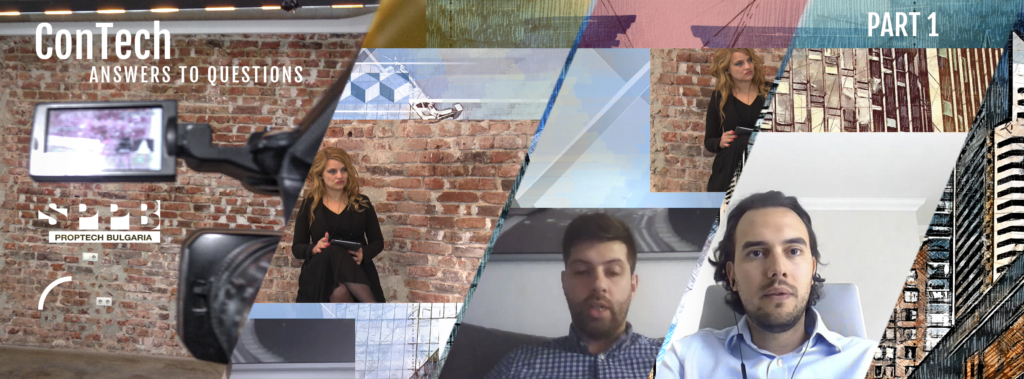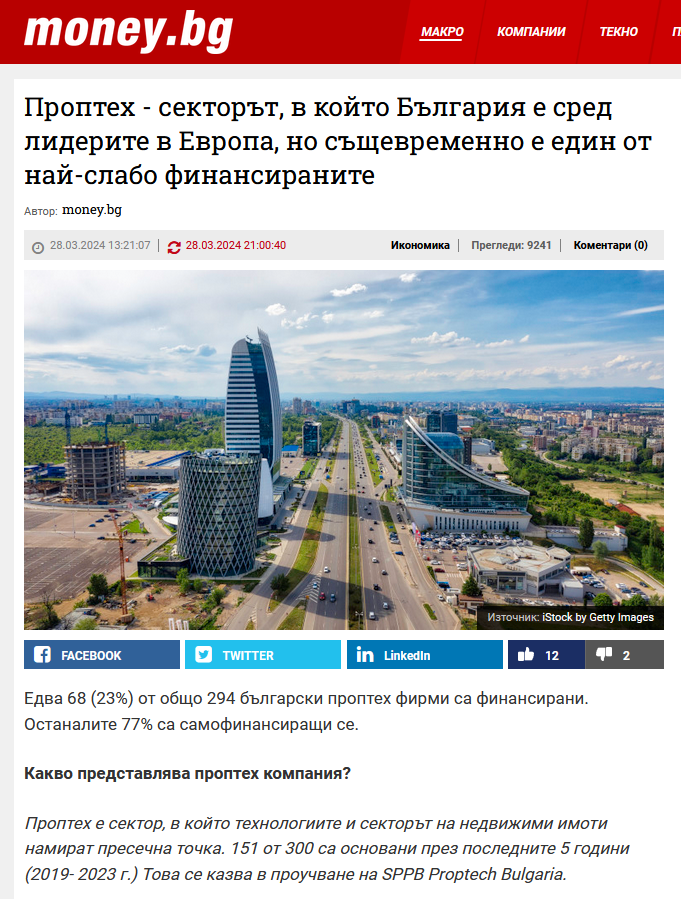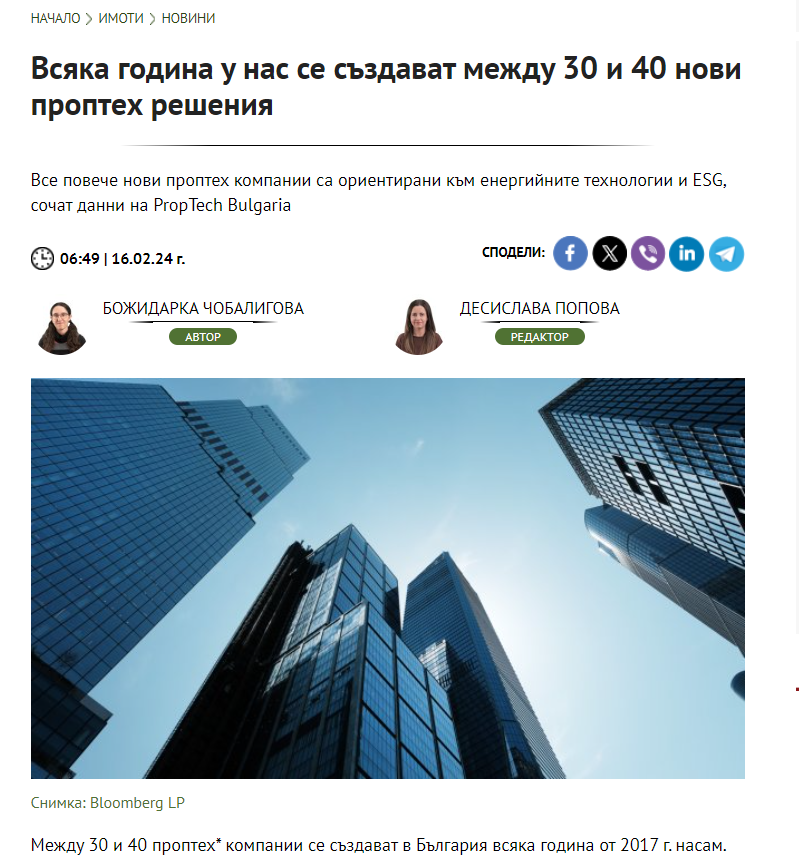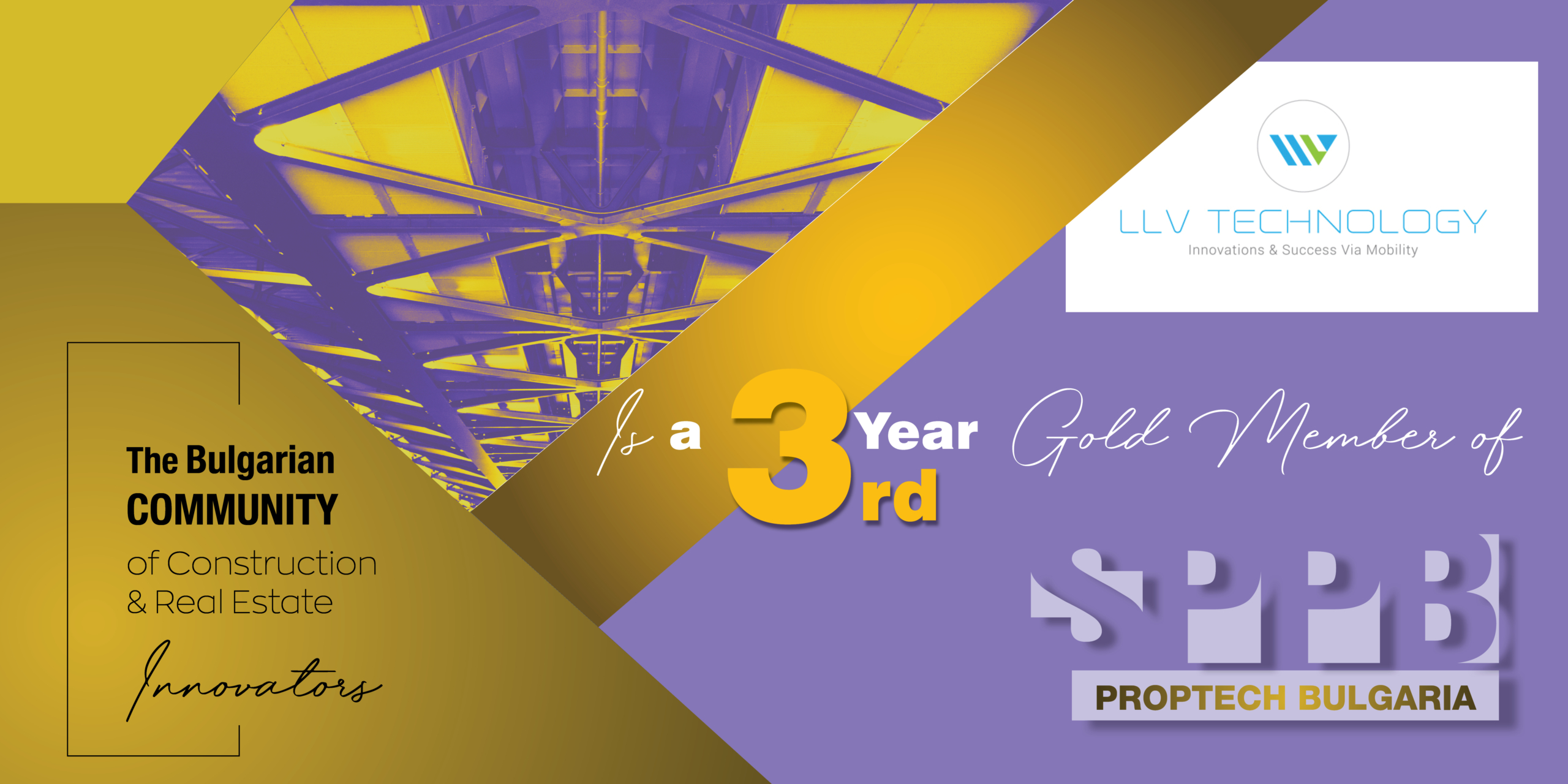CONTECH IN 3 TIME LAYERS: PART 3
> ConTech in 3 time layers: pre-Covid, during the pandemic, and what is ahead of us in the near future
> Future prospects for ConTech solutions that has only a software core, and the ones with a physical product
> Carboncapture ConTechs
We talked with Dr Dimitar Dimov, Founder Concrene Ltd, the UK, and Boris Goldshteyn, Co-Founder and CEO Visoplan GmBH, Germany
The interview is completed by Sylvia Pavlova MBA CMC, Founder PropTech Bulgaria, Co-Founder PrEXCELerator Bulgaria.
This interview was part of the Bulgarian PropTech Business Show on RE:Connect 3.0 on 24 June 2021. Bulgaria was represented by PropTech Bulgaria at RE:Connect 3.0 – one of the largest PropTech events worldwide. This is the 3rd part of our conversation. You can see the other 2 here >
About Dr Dimitar Dimov:
Dr Dimitar Dimov read BEng Civil Engineering followed by a PhD in Nanoscience Engineering at the Univeristy of Exeter, United Kingdom. In 2018 he founded Concrene Limited together with the University and an angel investor.
Dr Dimov was recognised as Forbes 30 Under 30 in 2019 for his innovative discovery and for founding Concrene Limited. He also has an extensive construction commercial experience, mainly focusing Modern Methods for Construction, sustainable procurement delivery models, construction cost management and advanced analytics.
Concrene Limited is a UK based nanotechnology company that develops a breakthrough solution for the concrete industry. We apply cutting edge nanoscience to improve the strength of concrete and reduce its carbon footprint.
Concrene Limited licenses its nanotechnology, protected by patent-pending application, to precast concrete manufacturers globally. We supply the graphene product, manufactured by Thomas Swan, and the process to our industry partners to make their products greener.
The Concrene nanotechnology is versatile and compatible with a wide range of concrete mixes, including CEM I-IV, GGBS, fly ash, basalt fibres, plasticisers and more. Concrene precast products benefit from increased durability, water resistance and lower carbon footprint due to low cement content.
About Boris Goldshteyn:
As managing director and founder of Visoplan, Boris Goldshteyn has been dealing with the digitization of the construction and real estate industry for many years. With his knowledge in the field of IT & management, he supervised construction projects in the DACH region during the digital transformation. His expertise extends above all in the early phases of the real estate life cycle, in the implementation and further development of Building Information Modeling (BIM) and the use of virtual technologies such as VR, AR & XR.
Visoplan GmBH is a SaaS company based in Berlin, which has set itself the goal of advancing digitization in the construction industry and making work with Building Information Modeling (BIM) easier by seamlessly integrating a new developed software solution into the everyday work of those involved into construction projects. The software is a Common Data Environment (CDE) platform, which is used as a central collaboration hub for construction projects, making the work & data exchange easier for property developers, architects & engineers.
7. What are your forecasts about the months ahead of us, or about a year or so? What do you think based on what is going on and you observe it currently? The trends you have shaped out?
BG: It is difficult. I am a little bit unsecure here as well. On the one hand we have all the growth in the construction industry, it seems that we always have enough money because buildings are always needed. When we look at Berlin, we have too less flats, too less offices. With the pandemic the office market totally changed because of the new work mode. However, the housing market is still the same. I am not sure if I should be very, very positive because we have 5-6 % steady growth before the pandemic, during the pandemic, and now. Or now the curve becomes more flattened due to a long-term effect of increasing material cost. If it continues to rise, many construction projects will die because of the discrepancy in their real and projected cost. It is a two-sided coin. I hope that next month with the political help to be directed also towards the construction industry, will be a huge support, and motivate also the investors who still have some money to invest in the industry. If there is enough money and if the growth is stable, I see digitalization going forward.
SP: This is really a very hard time for the industry; high pressure by the constant rise of material prices. For example, here in Bulgaria we have detected an average increase of 30 per cent, but in some cases we talk about 100 per cent of price increase. Also this urge to reconstruct the whole value chains and to convert them into near-shore ones. This definitely exerts very high pressure on the industry. This is why I asked you about your prognosis because for sure there will be a change.
DD: I share the opinion of Boris. Insecurity is not the right word. I believe that we are living in a kind of a bubble right now. The central banks printed a lot of money; there is cash surplus everywhere; let’s build. Construction is booming. Obviously, this causes shortage of material. Everything is great. Property prices have risen because people have more cash to invest to catch because of the income and inflation in the next couple of years. I am not entirely sure what will happen when actually this overexcitement suddenly plateaus and what’s in for the industry after that.
Right now it is great, but how long will that sustain, how long time will this momentum sustain and what will happen when we will come to the edge of it.
So I think in order to position ourselves for this too volatile time, which will come in 24 months maybe, we need to create value for our clients right now. We need to build strong client relationships, person-to-person relationships, to demonstrate value with a tangible output; let the work speak for itself; avoid overpromising; managing the expectations in the right way, so when that correction happens, when we have to pay all of that debt back – because every country is in debt right now – we as businesses, as companies, can survive that storm ahead.
SP: Thank you very much! It was real pleasure and very insightful to talk with you, and let’s keep in touch. Maybe in one year can gather together and reason what will have happened and what will be ahead of us. It is always very useful to feel the pulse of trends and what’s going on so that we can shape out what the future might be like. Thank you.

8. What do you admit will change in the upcoming year as a result of the pandemics, which processes will go even more digitized, and how?
DD: I think the pandemic was the perfect wake-up call for people who were over reliant on the assumption that the economy is always going to thrive and that disruptions happen locally without a macroeconomic impact. I hope that businesses will start thinking a bit more holistically and embrace change and technology at a faster rate (especially in construction).
One particular area that I would like to see more digitised in construction is collection of data and information about what happens on construction sites in a more systematic and transparent way. This would allow teams in central offices to have more visibility on what’s going on on-site remotely and generally will increase productivity.
9. What are the future prospects for ConTech solutions that have only a software core, and the ones with a physical product?
DD: I sincerely hope that the decade-long investors’ maniac obsession with software companies will now end and more attention will get paid towards startups with physical products. The latter argument is especially true if investors want to truly hit their sustainability goals.
They can’t achieve that by investing in an app that created a chat-bot or machine learning algorithm that scans your construction programmes to find out where you lost money – we need tangible innovation in construction materials that really offset carbon emissions at scale.
10. Carboncapture ConTechs or how does your ConTech solution contribute to the SDGs? How is the industry being currently shaped by this trend alongside the pandemic consequences?
DD: Our technology allows for 20% reduction in concrete volume on construction sites. This has a direct, measurable contribution to ESG because we can measure exactly how many kTs of C02 can be saved if you use less concrete on-site.
Carboncapture is a great technology too, albeit not in our comfort zone so I can’t comment much on it. It’s definitely needed though to further decrease the C02 in cement production plants for example.











Leave A Comment